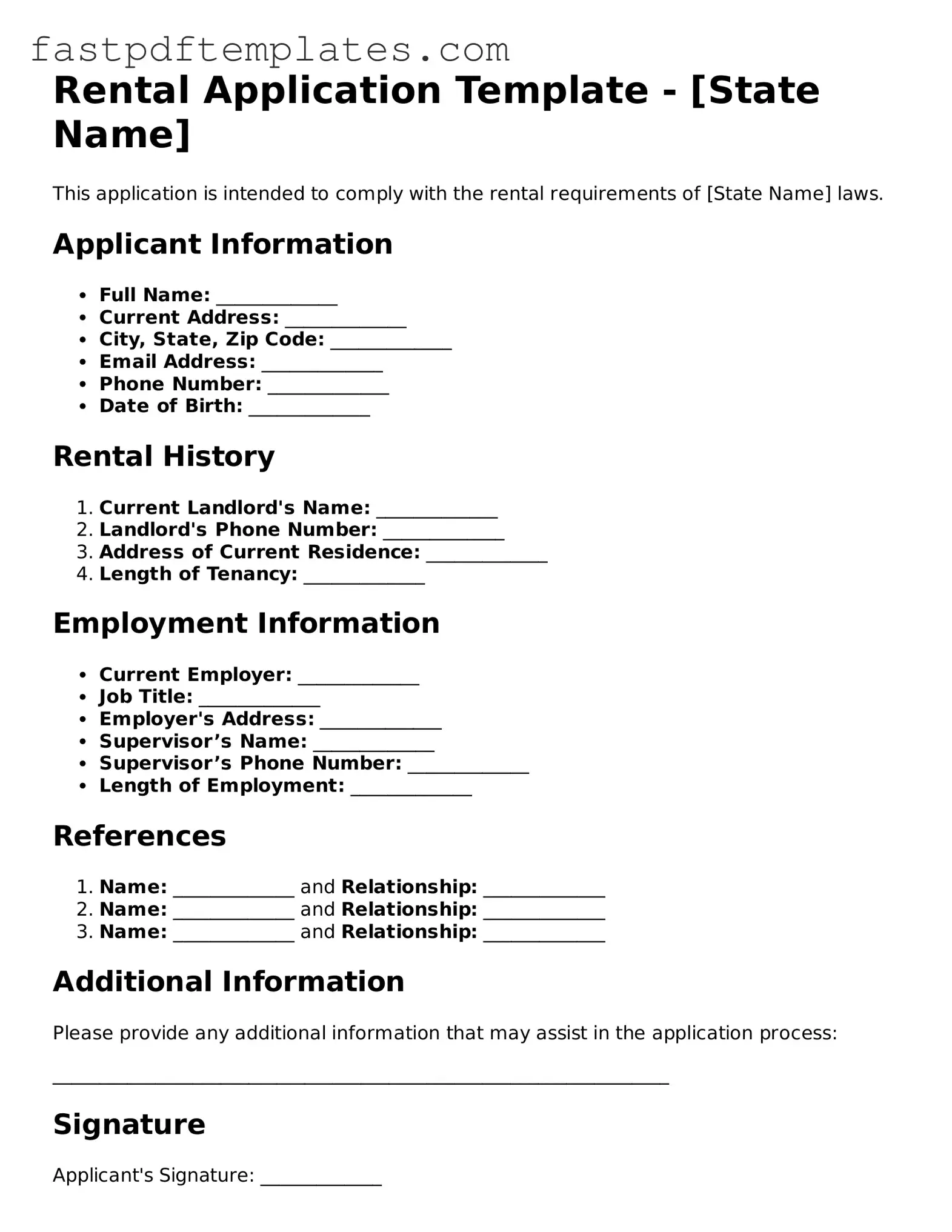The Rental Agreement is a document that outlines the terms and conditions under which a tenant will occupy a rental property. Similar to the Rental Application form, it requires personal information from the tenant, such as their name, contact details, and employment history. Both documents serve to establish a formal relationship between the landlord and tenant, ensuring that both parties understand their rights and responsibilities. The Rental Agreement typically follows the application process, formalizing the tenant's acceptance after approval based on the application details.
The Lease Agreement is closely related to the Rental Application form as it also involves the tenant's personal information and financial background. While the Rental Application is used to assess a potential tenant's suitability, the Lease Agreement solidifies the terms of the rental arrangement. It includes specifics like the duration of the lease, rent amount, and rules regarding property use. Both documents aim to protect the interests of the landlord while ensuring that the tenant is aware of their obligations.
The Background Check Authorization form is another document that shares similarities with the Rental Application form. This form is often included as part of the application process and allows landlords to verify the tenant's background, including credit history and criminal records. Like the Rental Application, it collects sensitive personal information, and both documents are essential in evaluating the tenant's reliability and suitability for tenancy.
The Employment Verification form also parallels the Rental Application form in its focus on the tenant's financial stability. This document is used to confirm the tenant's employment status and income level, which are critical factors for landlords when deciding on a rental application. Both forms require the tenant to provide personal and financial information, helping landlords assess the tenant's ability to pay rent consistently.
The Tenant Screening Report is similar to the Rental Application form in that it compiles various data points about the prospective tenant. This report often includes credit scores, rental history, and any legal issues that may affect the tenant's ability to fulfill lease obligations. Like the Rental Application, it plays a crucial role in the decision-making process for landlords, providing a comprehensive view of the applicant's background and reliability.
